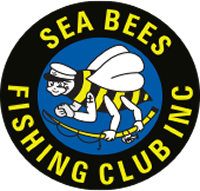Always keep your marine radio on the ‘Distress, Safety and Calling’channel. On VHF sets this is Ch 16 and on 27MHz radios, it is Ch 88. Because of prevailing conditions you may be the only ship station that picks up an emergency call from another boat.
See www.marinerescuensw.com.au for logging on and off.
Many radios allow you to set up a dual watch or scan mode to also monitor other channels, such as a local repeater, or a ship-to-ship channel. See radio courses for more information on the effective use of these modes.
If you need information or assistance while you’re out on the water, use the appropriate ‘Distress, Safety and Calling’ channel to call your local Marine Rescue radio base. You will then be asked to go to a “Working” channel. The Duty Operator will advise which channel to change to.
Be sure to listen for any other radio traffic before making your call, otherwise you might not be heard or you could interrupt another user’s transmission. Speak slowly and clearly.
When making an initial call, state the call sign of the Marine Rescue radio base you are calling three times and your own call sign three times. This is to help ensure the coast station knows you are calling them and who you are. Marine Rescue NSW call signs and listed on the find a unit map For example, if you make a call on VHF Ch16:
You: “Marine Rescue Sydney, Marine Rescue Sydney, Marine Rescue Sydney. This is (name of your boat) Firecracker, Firecracker, Firecracker. Over”
The Marine Rescue shore station will respond and ask you to go to a "Working’’ channel.
MR Sydney: “Firecracker, Firecracker, Firecracker. This is Marine Rescue Sydney, Marine Rescue Sydney, Marine Rescue Sydney. Please go to seven three. Over”
You: “Marine Rescue Sydney, this is Firecracker. Going to seven three. Over”
Now change your radio channel to 73 and call the shore station again.
You: “Marine Rescue Sydney, this is Firecracker. Over”
When the Marine Rescue shore station replies, seek the information you want or advise your plans. When your communications are complete, advise the shore station that you’re returning to the calling channel:
You: “Thanks Marine Rescue Sydney. This is Firecracker returning to 16. Out”
The shore station will respond:
MR Sydney: “This is Marine Rescue Sydney. Out.”
Now switch your marine radio back to 16VHF radio, or channel 88 on a 27mHz radio, leave the radio on and get back to enjoying your day out.
Remember, calls on marine radios are not private conversations so courtesy, good manners and appropriate language are essential.
This open communication is a major advantage if you’re in trouble as other boaters are likely to hear you and can come to your assistance if they are nearby on the water. This is why you should always use your marine radio first to call for help in an emergency.
In an emergency, use your mobile phone to call 000 as well as radioing for help.
But don’t bet your life on your mobile as your only means of communication. Only you and the person you’re calling can hear you and in an urgent situation this could cost precious time reaching someone who is ready to help.


